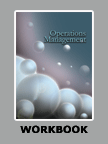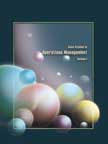Sears Logistics Management Practices
|
|
ICMR HOME | Case Studies Collection
Case Details:
Case Code : OPER026
Case Length : 13 Pages
Period : 1993 - 2003
Organization : Sears, Roebuck & Company
Pub Date : 2004
Teaching Note :Not Available
Countries : USA
Retail
To download Sears Logistics Management Practices case study
(Case Code: OPER026) click on the button below, and select the case from the list of available cases:

Price:
For delivery in electronic format: Rs. 400;
For delivery through courier (within India): Rs. 400 +Shipping & Handling Charges extra
» Operations Case Studies
» Case Studies Collection
» ICMR HOME
» View Detailed Pricing Info
» How To Order This Case
» Business Case Studies
» Case Studies by Area
» Case Studies by Industry
» Case Studies by Company 
Please note:
This case study was compiled from published sources, and is intended to be used as a basis for class discussion. It is not intended to illustrate either effective or ineffective handling of a management situation. Nor is it a primary information source.
Chat with us

Please leave your feedback

|
|




<< Previous
Excerpts
Revamping the Logistics Management System
|
Martinez had been highly influenced by Pagonis' account of practical
applications of military logistic strategies during the Gulf War, in his book -
Moving Mountains: Lessons in Leadership and Logistics from the Gulf War. At
Sears, Pagonis was made responsible for supervising the logistic systems that
enabled Sears' stores deliver numerous types of products to 5,000 homes per day,
with a total of 2,50,000 truckloads of goods per annum.
Pagonis was also in charge of vendor relations, transportation, storage,
distribution, international logistics, home delivery services and synergization
of IT systems.
|

|
With Sears owning 30 large distribution centers and 90
smaller storage outlets, Pagonis had to ensure uninterrupted supply of over
1,00,000 different products to more than 2,000 department, home and automotive
stores in the merchandise division (Refer Exhibit II). Before Pagonis joined
Sears, the company's logistic function was highly decentralized; for this reason
it was very difficult to locate the origin of a logistical problem. With the
assistance of Martinez, Pagonis centralized Sears Logistics Group (SLG), so that
it acted as a focal point for all the company's logistics-related problems...
Using IT Tools and Internet to Manage Logistics
By the end of 1995, Sears had implemented an electronic ordering system,
which connected the company's ordering system with every individual
supplier's ordering system. Sears also introduced a Strategic Performance
Reporting System (SPRS).
|
|
Reporting System (SPRS). SPRS was a part of five-year Strategic
Information Systems Plan (SISP) launched by Sears in 1994 to modernize
its operational systems. SPRS traced product flow starting from the
distribution centers to the stock keeping unit at various locations.
Sears also developed a system that enabled suppliers to verify the
status of an invoice at any given time.
The company also gave access to SPRS to its suppliers, so that they
could verify their product sales and practice just-in-time delivery.
Pagonis worked with Jerry Miller (Miller), VP, technology, for SLG to
minimize home delivery delays. The duo wanted to strengthen the
logistics system to overcome the problem... |
Excerpts Contd... >>
|
|










